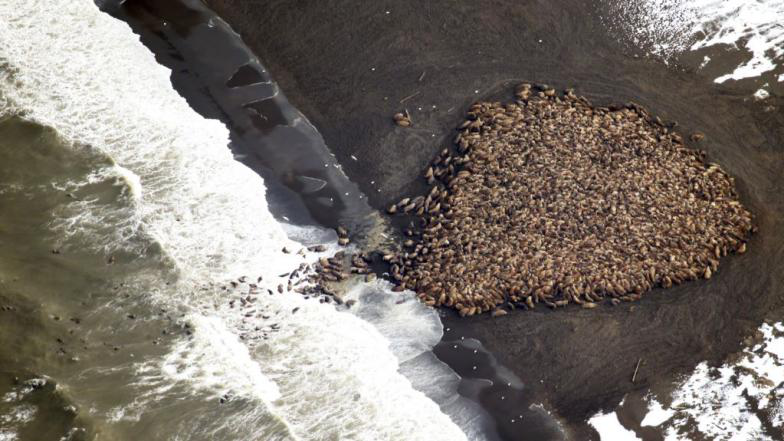
United States government scientists say July 2019 was the hottest month on record worldwide. The average temperature in July was almost one degree Celsius higher than the 20th century average of 15.78 degrees. That made it the hottest July on our planet over the past 140 years, according to the U.S. National Oceanic and Atmospheric Administration, or NOAA.
July 2019 also was the hottest month on record in the northwestern state of Alaska. Sea ice melted. Bering Sea fish swam in above-normal temperatures. So did children in the city of Nome, Alaska. The state’s wildfire season started early and stayed late. Walruses and other sea creatures appeared in large numbers along the coast. Alaska’s average temperature in July was 14.5 degrees Celsius. That is 3 degrees above average, NOAA reported. Unusual weather events like this could become more common with climate warming, notes climate researcher Brian Brettschneider.Sea ice off of Alaska’s north and northwest coast and other Arctic areas shrank to the lowest level ever recorded for July. Arctic sea ice for July set a record low of 7.6 million square kilometers. That represents a loss of 80,000 square kilometers — or about the size of South Carolina — below the old record low, set in July of 2012.
Sea ice is the home for polar bears and a place for female walruses and their young to rest. Several thousand walruses arrived along the coastline on July 30. That reportedly is the first time they have been observed in such large numbers before August.
Brettschneider, the climate researcher, sees mostly negative effects from the hot July and climate warming. Alaska looks the way it does because of its temperatures, he said, and in 50 years, Alaska may look like Idaho.
本时文内容由奇速英语国际教育研究院原创编写,未经书面授权,禁止复制和任何商业用途,版权所有,侵权必究!(作者投稿及时文阅读定制请联系微信:400-1000-028)
1.Which of the following is TRUE according to the passage?
A The average temperature in July was lower than that in the 20th century.
B Unusual weather events will be less and less because of climate warming.
C In July, Arctic sea ice set a record low of 7.6 million square kilometers.
D Several thousand walruses always arrive along the coastline before July 30.
解析:选C。细节理解题。由第四段第二句Arctic sea ice for July set a record low of 7.6 million square kilometers.可知7月北极海冰创下760万平方公里的历史新低,故选C。
2.Sea ice in Arctic is important for ______ according to the passage. a. polar bears b. young walruses c. penguins d. female walruses
A abc
B bcd
C acd
D abd
解析:选D。细节理解题。由第五段第一句Sea ice is the home for polar bears and a place for female walruses and their young to rest. “海冰是北极熊的家,也是雌海象和幼海象休息的地方。”可知对polar bears, female walruses and their young非常重要,故选D。
3.Which opinion might Brian Brettschneider agree with?
A The hot July and climate warming have little effects on Alaska.
B The hot July and climate warming have bad effects on Alaska.
C The hot July and climate warming have no effects on Alaska.
D The hot July and climate warming have good effects on Alaska.
解析:选B。观点态度题。由最后一段可知:气候研究员Brettschneider认为,炎热的7月和气候变暖带来的负面影响更多。他说,阿拉斯加现在的样子是因为它的温度,50年后,阿拉斯加可能会变成爱达荷州,故选B。
4.What’s the best title of the passage?
A The hottest July in Idaho.
B The hottest July in South Carolina.
C The hottest July in USA.
D The hottest July in Alaska.
解析:选D。主旨大意题。通读全文,文章主要介绍今年七月成为阿拉斯加创纪录最热月份以及由此造成的一些影响,故选D。